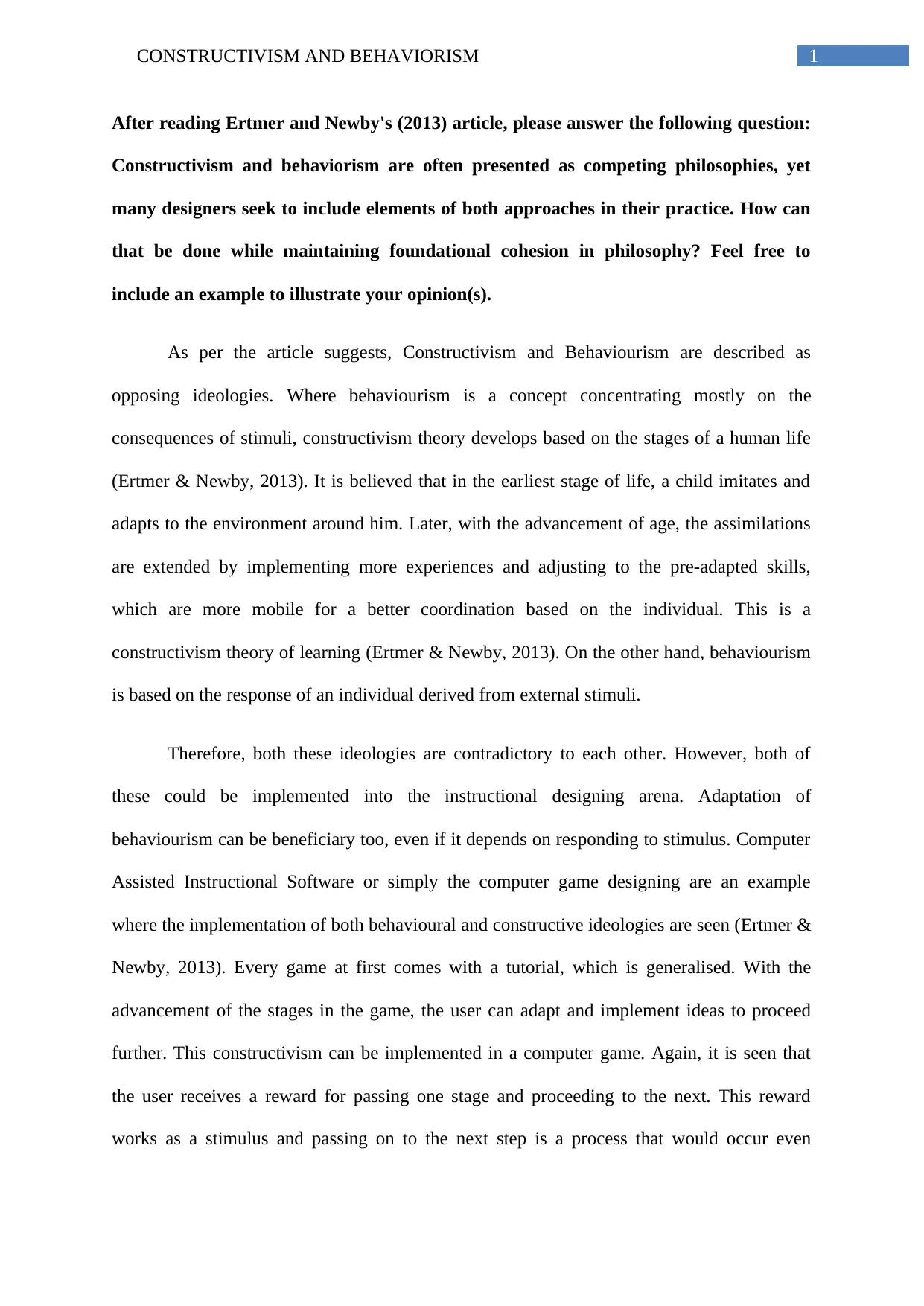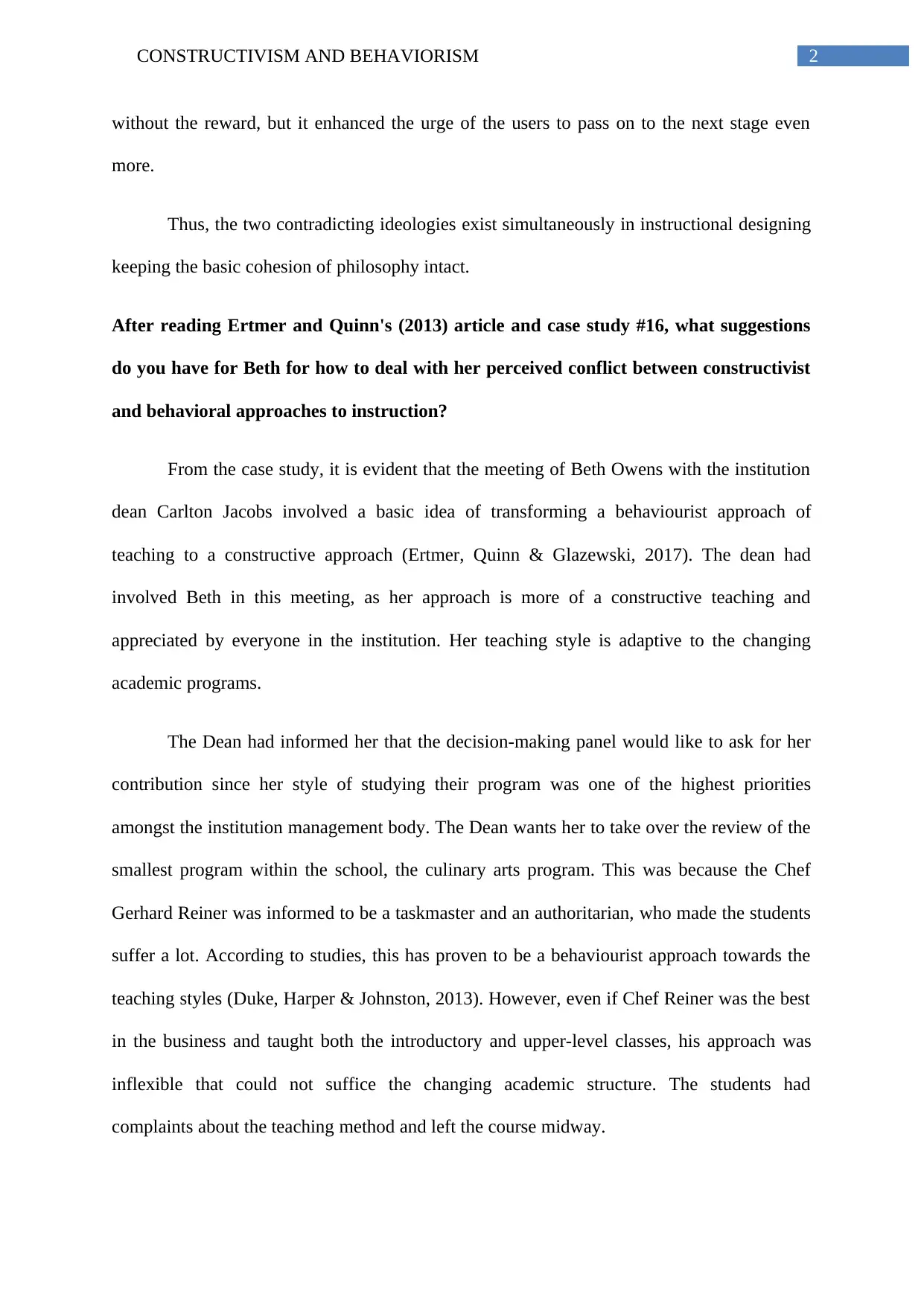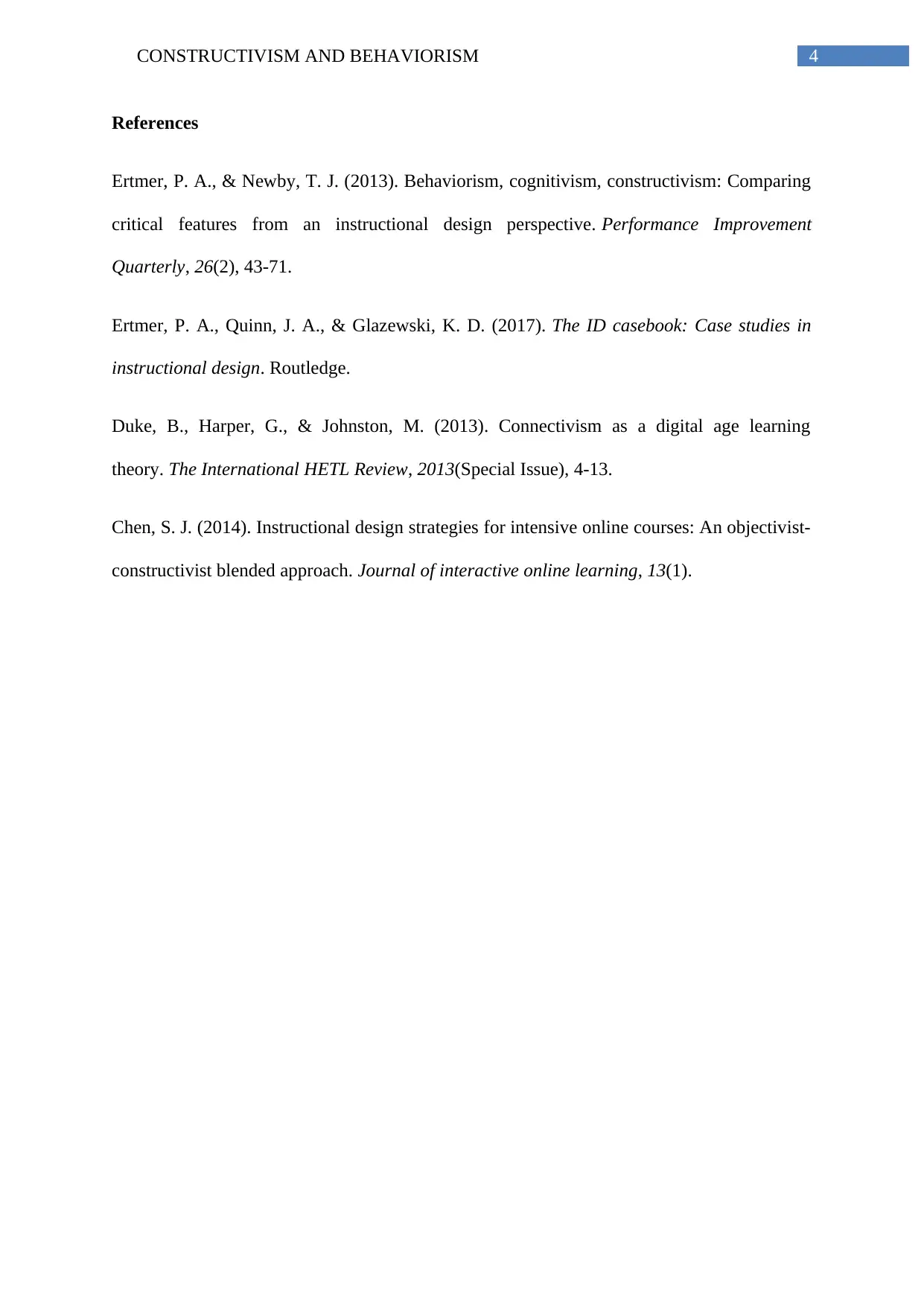Analysis of Constructivism and Behaviorism in Instructional Design
VerifiedAdded on 2021/04/21
|5
|917
|253
Homework Assignment
AI Summary
This assignment delves into the contrasting educational philosophies of constructivism and behaviorism, exploring their core principles and applications in instructional design. The student examines how these seemingly opposing ideologies can be integrated effectively, citing examples like computer game design where behavioral elements (rewards) reinforce constructivist learning (adaptation and implementation of ideas). The assignment further analyzes a case study involving Beth Owens, who faces the challenge of transitioning a culinary arts program from a behaviorist approach to a more constructivist model, emphasizing the need for flexibility and student-centered learning. References include key articles by Ertmer and Newby, and Ertmer, Quinn, and Glazewski, providing a comprehensive understanding of the topic and practical suggestions for educators navigating this philosophical landscape.
1 out of 5






![[object Object]](/_next/static/media/star-bottom.7253800d.svg)